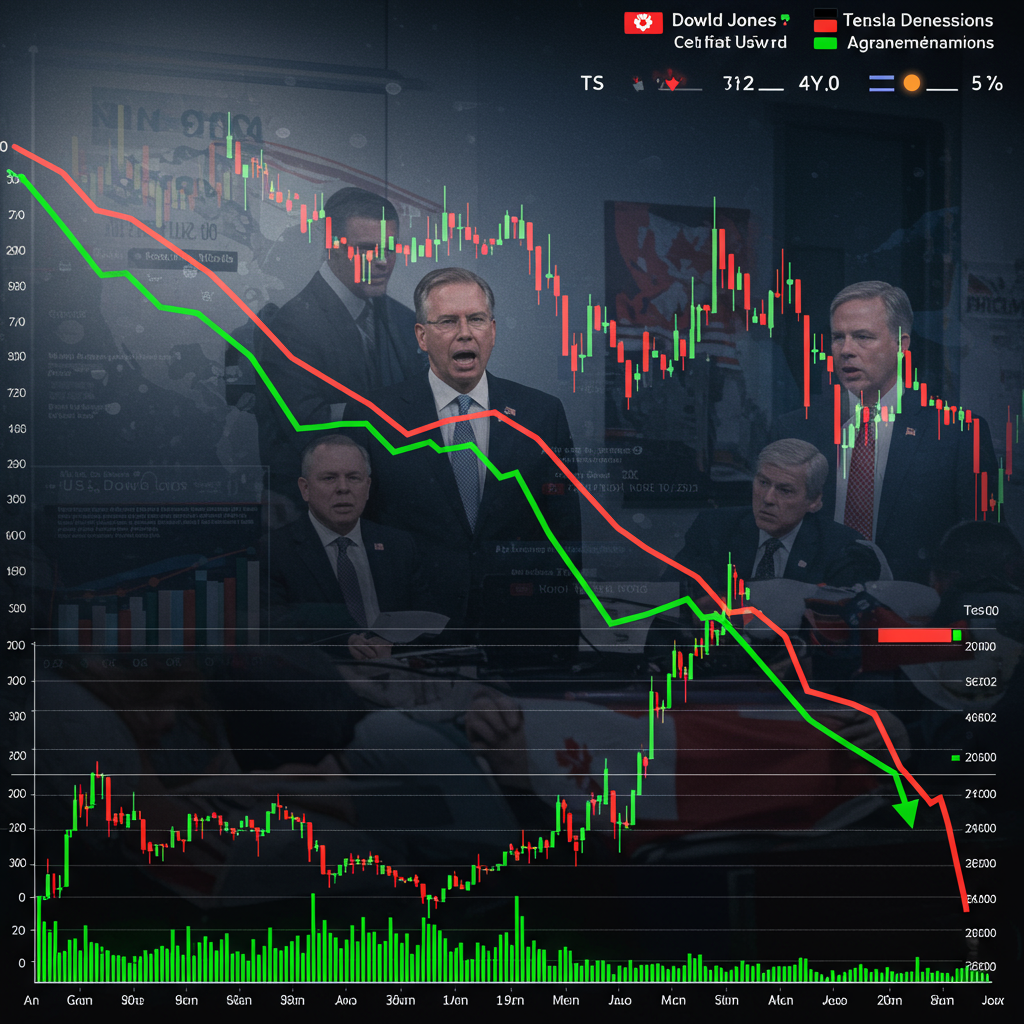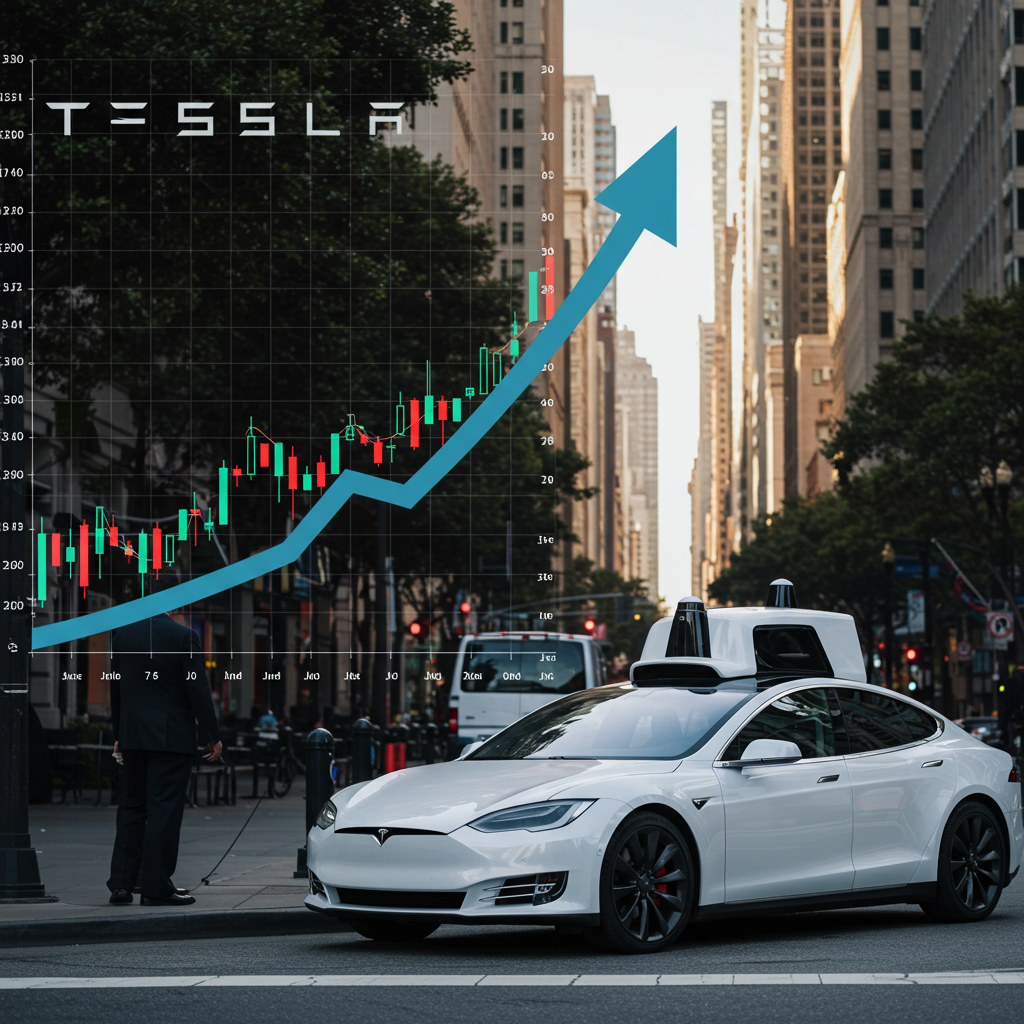The stock market saw notable movements as June wrapped up. The Dow Jones Industrial Average posted gains, contributing to an optimistic outlook for the upcoming month. This upward trend occurred amidst ongoing discussions surrounding U.S.-Canada trade relations. Meanwhile, shares of electric vehicle giant Tesla experienced a decline, with investors potentially focused on the company’s anticipated delivery figures.
Understanding the forces shaping daily market performance is crucial for investors. Factors like international trade policies and company-specific news significantly influence investor sentiment and index movements. The period saw volatility tied to these very issues, impacting major indices and individual stocks alike.
Trade Tensions and Market Sentiment
Trade talks, particularly those involving major partners like Canada, have been a recurring theme influencing market sentiment. While the original report highlights the Dow rising amidst U.S.-Canada trade talks, the broader context from recent months (March-April 2025) shows how sensitive markets are to trade policy announcements. Threats of tariffs, including those targeting Canadian metals and automobiles, previously triggered significant market sell-offs, impacting the Dow, S&P 500, and Nasdaq Composite.
For instance, reports of potential reciprocal tariffs and a “tariff floor” on imports from nearly all countries, as detailed in April summaries, led to sharp declines in stock futures after initial market gains. The uncertainty surrounding the scope and impact of these trade measures created anxiety. Analysts warned such policies could reignite inflation, weigh on economic growth forecasts, and negatively affect corporate earnings. A pullback on some of these tariff threats, as seen in later reports in April, often correlated with market rebounds, demonstrating the direct link between trade clarity and investor optimism.
How Tariffs Impact Different Sectors
Trade tensions don’t affect all companies equally. Industries reliant on imports or exports to targeted countries face direct impacts. For example, homebuilder stocks saw pressure due to fears that tariffs on materials from Canada, Mexico, and China could increase construction costs. This potential cost increase could translate into higher home prices, smaller homes, or reduced building activity, influencing the housing market.
Agricultural equipment manufacturers also faced concerns that trade disputes could harm agricultural exports. Conversely, domestic industries or those potentially benefiting from reduced foreign competition might see advantages. The ongoing nature of these trade discussions means that market reactions can be swift and volatile, changing rapidly as rhetoric and policy details emerge. Investors closely monitor headlines for any developments that could signal shifts in trade relationships and their potential economic consequences.
Tesla’s Stock Volatility
Tesla’s (TSLA) stock performance is frequently tied to anticipation around its vehicle delivery reports. The original note mentions Tesla falling with deliveries due, suggesting market focus on these numbers. Historical data from earlier in the year (April 2025) supports this, showing TSLA shares initially fell after the company reported weaker-than-expected first-quarter deliveries compared to analyst forecasts.
However, Tesla’s stock movements are influenced by a confluence of factors beyond deliveries. These include broader tech sector trends, competition from other EV manufacturers (like BYD), CEO Elon Musk’s public activities and involvement with the company, and even geopolitical risks like tariff impacts. A report in April suggesting Musk might step back from a government role coincided with a Tesla stock rally, reversing earlier losses. Similarly, positive analyst commentary, like a “Top Pick” rating based on views of Tesla as a diversified AI and robotics company, could support the stock despite short-term delivery dips.
Other Factors Affecting Tech Stocks
Tesla’s trajectory is also part of the larger narrative for mega-cap technology stocks. The “Magnificent Seven” experienced volatility in the months preceding June 2025. Tariff threats impacted tech giants like Apple, Amazon, and Nvidia due to global supply chains and market access concerns. Sell-offs in the tech sector, sometimes driven by recession fears or shifting investor sentiment away from previous market leaders, can pressure individual stocks like Tesla.
Conversely, periods of easing trade tensions or positive company-specific news could trigger rallies across the tech landscape. Palantir and Super Micro Computer also saw significant moves based on earnings, analyst ratings, and AI sector trends. The interconnectedness of these large tech firms means that sentiment or news affecting one can often spill over to others, including Tesla.
Broader Market Performance and Economic Clues
Beyond trade talks and individual stocks, the broader market indices reflected a complex economic environment. While the Dow saw a rise on the day noted in the original report, earlier periods in March showed significant market declines across the S&P 500, Nasdaq, and Dow, partly attributed to lingering trade tensions and growing recession fears.
Economic data released throughout this period provided further context. Reports on manufacturing activity, inflation (Consumer Price Index and Producer Price Index), and the labor market (Job Openings and Labor Turnover Survey) were closely watched indicators. Signs of moderating wage growth or changes in job openings could signal a cooling labor market, potentially influencing Federal Reserve policy expectations regarding interest rates. Inflation data remained crucial, with tariffs often cited as a potential inflationary pressure.
Commodity markets also reacted to the climate of uncertainty. Gold, traditionally a safe-haven asset, saw price increases during periods of heightened tariff fears or economic concern. Oil prices, conversely, sometimes slipped amid worries about global economic growth being dampened by trade disputes. The yield on the 10-year Treasury note often moved inversely to market sentiment, falling when economic concerns rose.
Shifting Investor Perspectives
Market commentary from analysts highlighted a shift in investor sentiment throughout this period. Some firms downgraded their view on U.S. equities, suggesting a pause in U.S. exceptionalism and favoring other markets like China. Concerns about “stagflation” (slow growth with high inflation) and uncertainty surrounding government spending changes (“DOGE”) also weighed on sentiment. The volatility underscored a market searching for direction amidst conflicting signals from economic data, corporate performance, and unpredictable policy announcements.
Specific sector performance varied widely. Airline stocks faced headwinds from softening domestic demand and “macro uncertainty.” Retailers like Kohl’s issued cautious outlooks, reflecting careful consumer spending habits influenced by inflation and trade tensions. However, some companies, like Chipotle, saw analyst upgrades based on solid fundamentals and technology investments, despite potential tariff impacts on costs.
Frequently Asked Questions
How did U.S.-Canada trade talks specifically influence the Dow Jones recently?
Recent U.S.-Canada trade discussions, particularly those involving potential tariff changes on goods like metals and automobiles, created significant market volatility. While positive movement in talks can boost investor confidence and help lift indices like the Dow Jones, threats of new tariffs or escalating disputes have historically led to sharp market declines across major indices. The market reacts strongly to any signs that trade relations might impact corporate profitability or economic growth.
Why does Tesla stock often react strongly to delivery reports?
Tesla’s stock performance is highly sensitive to its vehicle delivery figures because deliveries are a key indicator of the company’s sales volume and operational execution for the quarter. Meeting or exceeding delivery expectations often signals strong demand and production efficiency, positively impacting the stock. Conversely, missing delivery targets raises concerns about demand, production capacity, or competition, frequently leading to share price declines. Investors see deliveries as a crucial metric for assessing the company’s growth trajectory.
What other factors besides trade influenced the stock market during this period?
Beyond trade talks, the stock market during this time was influenced by a range of factors. These included anticipation of company earnings reports (impacting stocks like GE Vernova, Boeing, and chipmakers), economic data releases (inflation, labor market indicators, GDP forecasts), shifts in investor sentiment (like concerns about recession or stagflation), analyst rating changes, and company-specific news (such as CEO activities, product launches, or partnerships like DoorDash’s deal with Domino’s). Geopolitical events and broader market trends in specific sectors like technology also played significant roles.
Navigating a Volatile Market
The stock market is constantly reacting to a blend of macroeconomic factors, government policies, sector-specific trends, and individual company performance. The dynamic interplay between trade negotiations, company reports like Tesla’s deliveries, and broader economic indicators creates a complex environment for investors. Periods of uncertainty, like those driven by unpredictable trade policies, can lead to increased volatility across indices and individual stocks.
Staying informed about these diverse influences is key to understanding market movements. While a single day’s rise in the Dow amidst trade talks or a fall in Tesla shares ahead of deliveries might seem isolated, they are often symptomatic of deeper trends and ongoing dialogues that shape the economic landscape and investor decisions.



